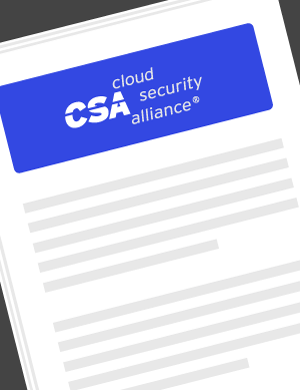Download Publication

Who it's for:
- SMB Owners
- IT and Security Teams
- vCISOs
- Buyers and Providers of Managed IT and Security Services
- External IT Auditors and Assessors
Zero Trust Guidance for Small and Medium Size Businesses (SMBs) - Korean Translation
Release Date: 08/07/2025
This localized version of this publication was produced from the original source material through the efforts of chapters and volunteers but the translated content falls outside of the CSA Research Lifecycle. For any questions and feedback, contact [email protected].
Cybersecurity for small businesses involves unique and heightened challenges. This makes the adoption of a Zero Trust strategy critical for safeguarding their assets and data. Zero Trust is a security strategy that leverages long-standing principles like least privilege and “never trust, always verify.”
Cybersecurity for small businesses involves unique and heightened challenges. This makes the adoption of a Zero Trust strategy critical for safeguarding their assets and data. Zero Trust is a security strategy that leverages long-standing principles like least privilege and “never trust, always verify.”
This publication provides guidance for small and medium-sized businesses (SMBs) transitioning to a Zero Trust architecture. It takes into account the many unique constraints that SMBs face, including budget, resources, and deep subject matter expertise. This guidance explores key components such as identity verification, endpoint security, network segmentation, and continuous monitoring to prevent unauthorized access. Additionally, it discusses the importance of understanding unique organizational needs, aligning security practices with business goals, and fostering a security-centric culture among employees.
By following this guidance and embracing Zero Trust, SMBs can enhance their data protection, customer trust, and resilience. While SMBs do face unique challenges, they will find that Zero Trust ensures a more robust environment that supports their business goals.
Key Takeaways:
Key Takeaways:
- Why SMBs should be concerned about cybersecurity
- The basic security measures to have in place before implementing Zero Trust
- The basics of a Zero Trust strategy
- The five-step Zero Trust implementation process and how to apply it to SMBs
- Considerations for engaging managed security service providers (MSSPs)
Download this Resource
Prefer to access this resource without
an account?
Download the publication. Download the presentation.
Related Resources
Interested in helping develop research with CSA?
Related Certificates & Training
.png)
For those who want to learn from the industry's first benchmark for measuring Zero Trust skill sets, the CCZT includes foundational Zero Trust components released by CISA and NIST, innovative work in the Software-Defined Perimeter by CSA Research, and guidance from renowned Zero Trust experts such as John Kindervag, Founder of the Zero Trust philosophy.
Learn more
Learn more



.jpeg)
.jpeg)
.jpeg)
.jpeg)